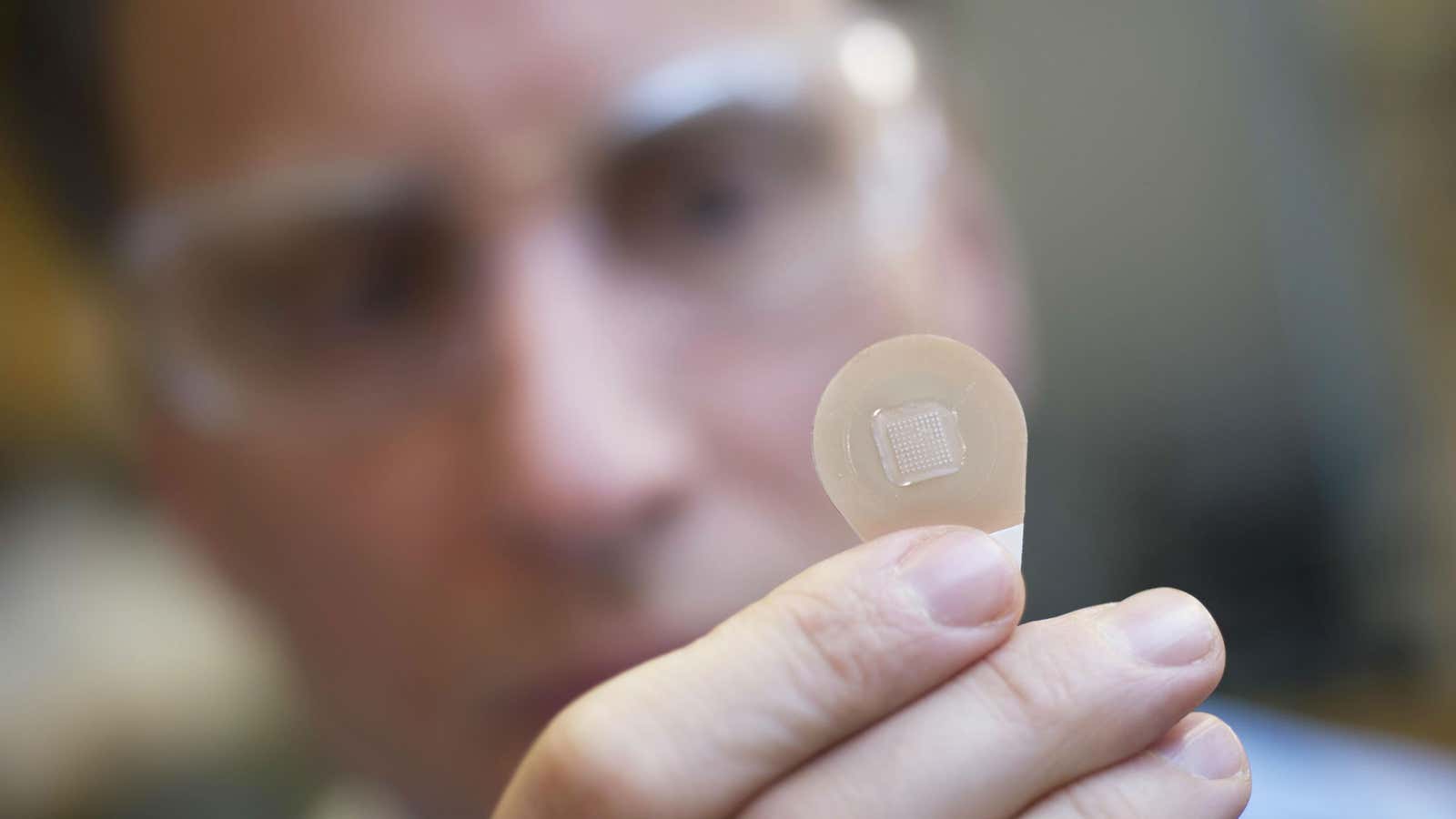For years, scientists and healthcare providers have believed there has to be a better way than needles to deliver routine medicine like the annual flu vaccine. Flu shots are uncomfortable and require a trip to a pharmacy or doctor’s office, which is enough to deter some people from getting them. But now, there’s a patch that can do the same job at home, without any pain.
On June 28, researchers from Emory University and the Georgia Institute of Technology revealed the results of a clinical trial showing that a dime-sized patch lined with dissolvable microscopic needles could safely deliver a dry flu vaccine to patients with nothing more than a little redness or itchiness afterward. Their work was published (paywall) in the Lancet.
Unlike shots, which inject medicine all the way into the muscle, the microneedle patch delivers its payload through the skin. Because the needles are so small, applying the patch is as painless as putting on a tiny bandaid. Then, the water-soluble microneedles dissolve in the skin, which means users could give the vaccines to themselves and discard the remains afterward in their own homes.
The study involved 100 adults who were given the vaccine for the 2014-2015 seasonal flu after the season ended (they all reported that they had not gotten their flu shot the year before). Some got a regular flu shot, and some got the microneedle patch. Six months later, the patients came back in to get their blood tested for flu antibodies—if antibodies were present, it was a sign that the vaccine had effectively prepared the person’s immune system to fend off the flu. The blood tests showed that the patch was just as effective as a traditional shot, and the only complaints reported about the microneedle patch were a little redness around the area, tenderness, and slight itching, all of which disappeared a couple of days after application.
Because the microneedle patch delivers dry drugs, it doesn’t need to be stored at cool temperature the way liquid medicines, like traditional flu vaccines, do. Vaccines that don’t require refrigeration could have a longer shelf-life in pharmacies, and people could pick them up and give them to themselves at home. They could even be distributed in the mail, which would be a huge help in reaching people living in rural areas.
Researchers need to test the patch on larger populations to ensure its safety and efficacy before it’ll be on your pharmacy shelf. In the meantime, the team is also looking at how this same technology could be used to distribute other kinds of drugs more easily.
